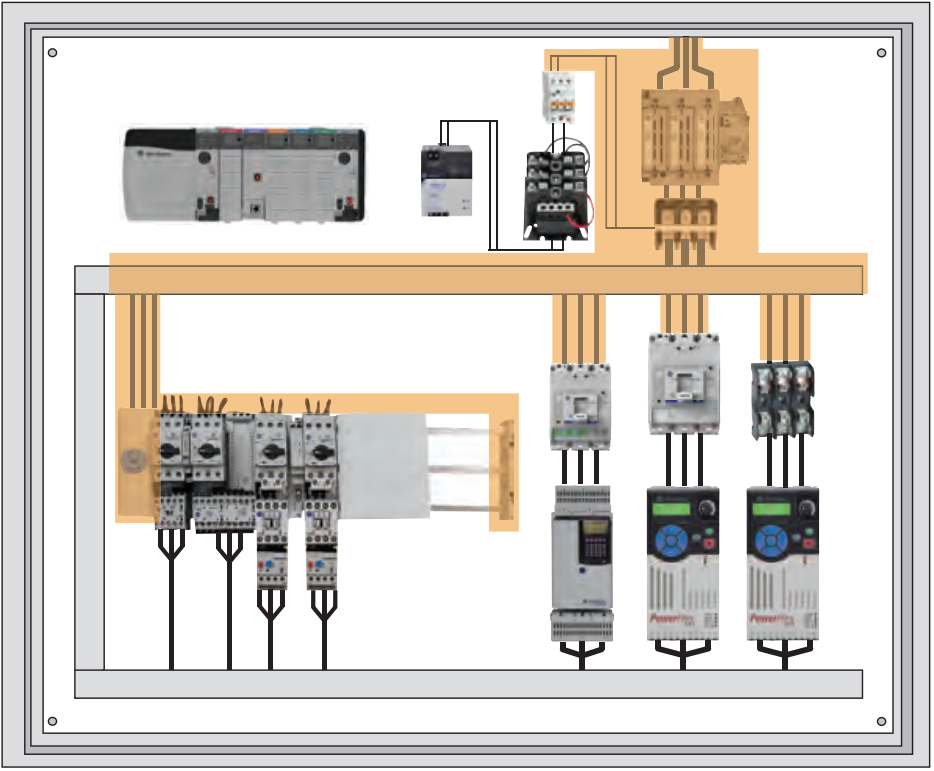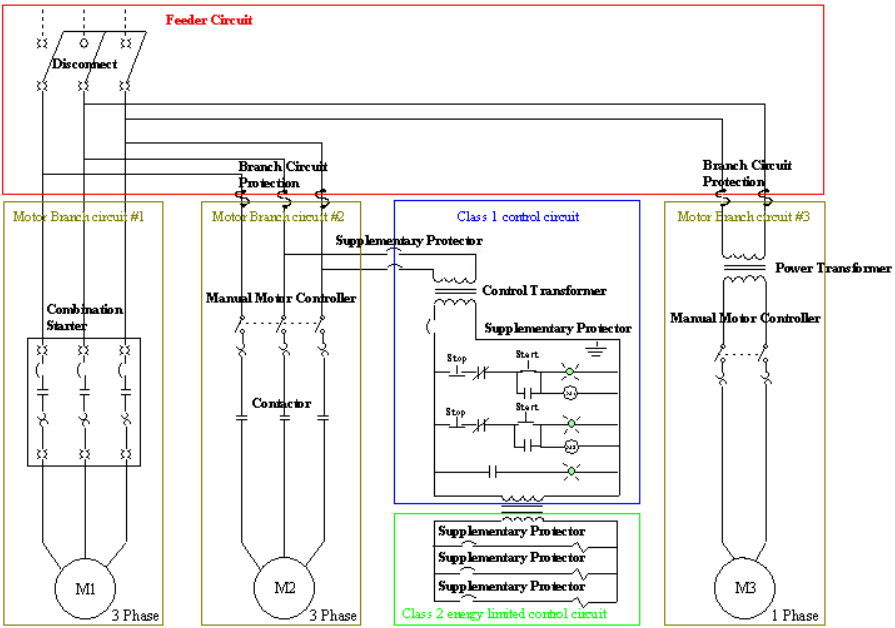Circuit Protection Explained: When to Use Branch or Supplementary Devices

Branch Circuit Protection Definition:Branch protection refers to overcurrent protection for the final circuit segment that delivers power to individual loads or devices. This is the primary protection required by the National Electrical Code (NEC) in the United States for circuits that extend from a panelboard to an end-use device. Key Features: Must comply with UL […]
Circuit Types in Industrial Control Panel

Introduction In industrial control panel design, safety, compliance, and system reliability are all influenced by one key factor—circuit type. Before selecting protection devices such as circuit breakers or supplementary protectors, it is essential to understand the type of circuit in use. There are three primary circuit types relevant to control panels: feeder, motor branch, and […]
UL 489 vs UL 1077 – Selecting Branch and Supplementary Circuit Protection

Introduction In electrical design, choosing the right protection matters. It affects safety, performance, and compliance. Two key standards in North America are UL 489 and UL 1077. They are often confused, but they serve very different roles. Picking the correct one is crucial for protecting equipment and ensuring system reliability. UL 489 – Branch Circuit […]
